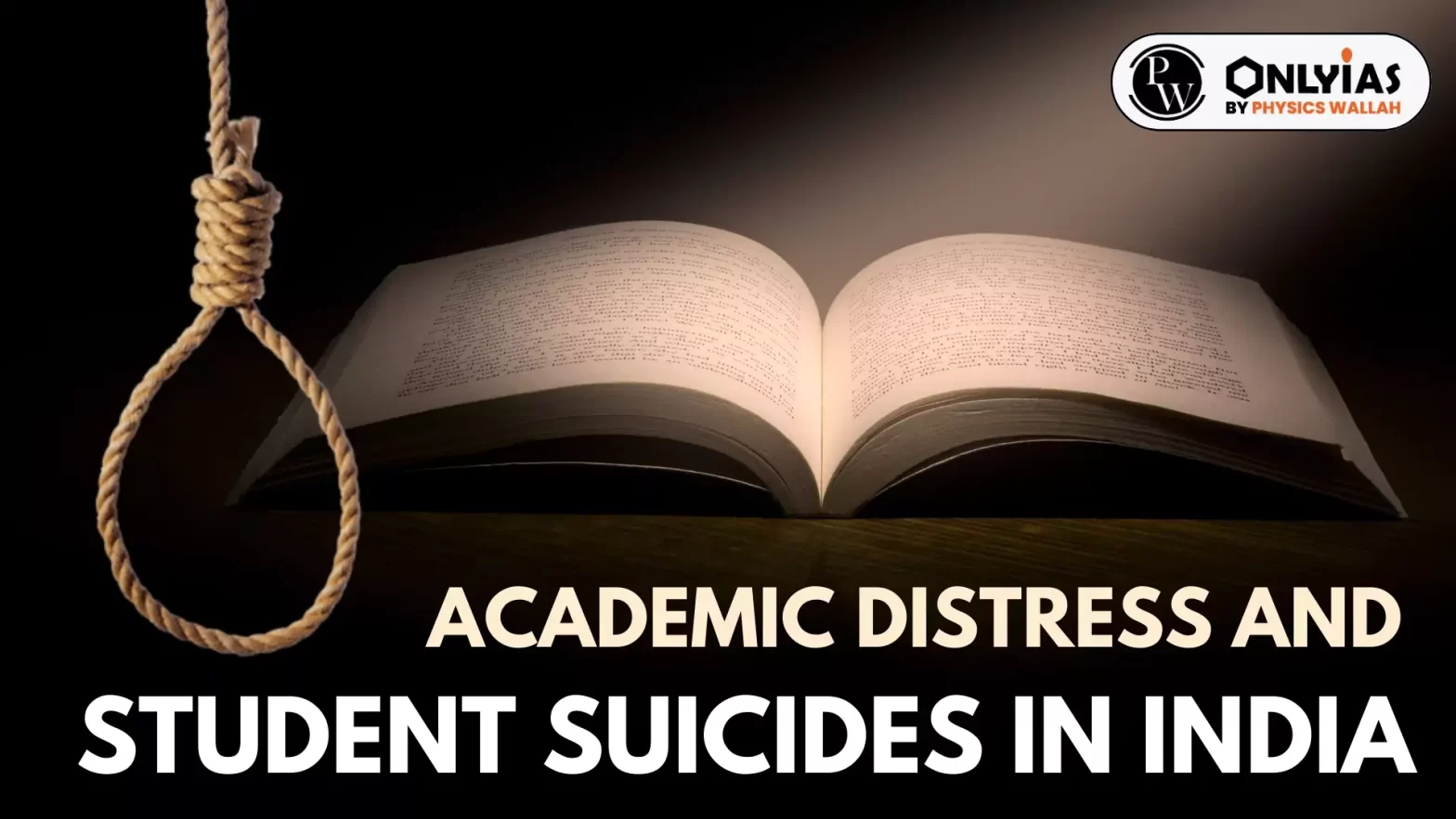Context
Recently, a teenager from Bihar committed suicide on the stress for the ‘Joint Entrance Examination (JEE)’ which highlights the concerns of rising number of student suicides cases regarding the stress in their academic endeavours.
Student Suicides in India: Concerning Statistics
- Student Suicides in Kota Based on Police Records: In Kota,15 students ended their lives in 2022, 18 in 2019 and 20 in 2018.
- There was negligible data during the COVID-19 pandemic years of 2020-21 when traditional coaching centres were either closed or operated virtually.
- The “Accidental Deaths and Suicides in India 2022” Report by the National Crime Records Bureau (NCRB): As per the data, in 2022, over 13,044 Indian students ended their lives — 7.6% of the total suicide fatal ities in that year.
- Also, the number of suicides (students) rose from 10,335 in 2019, to 12,526 in 2020, to 13,089 in 2021 and around 95,000 students faded away between 2007-2018.
- In 2023, there were reports of youngsters preparing for various competitive exams in Kota ending their lives.
- Lancet Study: A study in 2008 in The Lancet revealed that nearly 61% of global suicide fatalities were concentrated in Asia.
Challenges Faced by Students
-
Lack of Suitable Job Opportunities:
- The last decade has seen a distressing rise in student suicides, which is also connected to a lack of viable job opportunities. Over half of India’s populace is under the age of 25 but is deficient in essential skills.
-
Limited Government Seats:
- There are very few seats in government institutions and private institutions charged very high fees. An All India Survey on Higher Education (AISHE) report (2019-20), showed that 78.6% colleges are under private entities.
- Numerous families face financial constraints that prevent them from providing their children with coaching and tuition and this lack of support places immense and intense pressure on students to succeed in exams and a lack of success then leads to tragedy.
-
The Intense Competition:
- It is made worse by the parents’ pressure and judgment by faculty members on the basis of academic performance.
- The Indian society emphasizes expectations, performance and personal interests in family interactions.
-
Weakening Family Structures and Emotional Distress:
-
- The family structures with a weakening of crucial connections between children and their families, parental control, emotional detachment, and societal expectations are impacting their mental health.
- Various factors influence a child’s development within the Indian context, in turn affecting social relationships, mental wellbeing and overall development.
-
Discrimination:
-
- SCs and STs face high discrimination and that leads to pressure. In IITs, disadvantaged section is a major chunk that commits suicide.
Preventive Measures Taken in Kota, Rajasthan
- By Hostel Management: Hostels have now been equipped with ‘anti-suicide features’ that include devices fixed to ceiling fans to prevent children from harming themselves and iron grills across balconies and passage ways.
- By Local Government: The local government in Kota has stopped all routine testing in coaching institutes for over two months as a temporary measure.
- Training: Hostel staff are also being trained and prepared to deal with the welfare of their wards.
- For professional development, there is specialised training in mess administration, psychological support, behavioural counselling and an emphasis on overall student welfare.
- By Local Police: The Kota police have pushed hostel wardens to become more proactive by endorsing campaigns such as “darwaze pe dastak (knock on door),” while kitchen workers and meal service providers have been encouraged to alert authorities immediately if they notice students missing their meals or leaving their food untouched.
|
Conclusion
In such a concerning scenario, there is a need to know the root cause of the problem, faculty members need to offer encouragement and assistance, family members need to create an atmosphere of empathy and acceptance with an urgent need for the social infrastructure to grow more supportive and accommodative and support these young lives.
Also Read: Rethinking India’s Exam-Centric Education System
![]() 27 Mar 2024
27 Mar 2024

